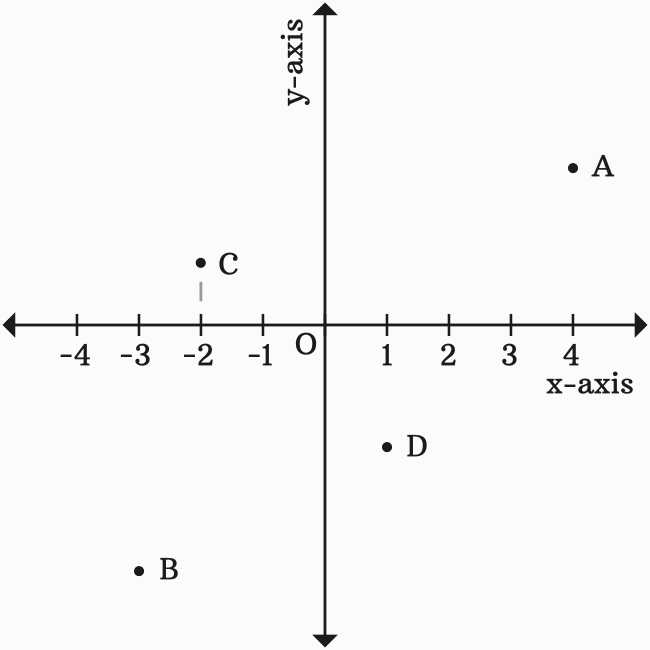

The plot is labeled according to the results it contains. In a cartesian plot the 1D values are plotted in a cartesian system where the abscissa holds the function parameter and the ordinate holds the function value. Shows an admittance Smith Chart of the result Shows an impedance Smith Chart of the result Shows the dB-scaled magnitude of the result Depending on the result type, only some of the following 1D plot ribbon settings may be active: When a tree item is selected, the plot toolbar shows possible visualizations of the result. The plot type is dependent on which item is selected in the tree. Note that all frequency or time dependent plots share a corresponding x-axis. The plot properties of each window can be set separately.
#ABSCISSA VALUES WINDOWS#
Additional plot windows can be created by selecting 1D Plot: New Plot Window. Every one-dimensional result plot may be configured in numerous ways to ease the results analysis.Ī plot window will open once a 1D result is selected in the Navigation Tree.

Used in this way, the abscissa can be thought of as a coordinate-geometry analog to the independent variable in a mathematical model or experiment (with any ordinates filling a role analogous to dependent variables).This page provides an overview of the different 1D plot features. In a somewhat obsolete variant usage, the abscissa of a point may also refer to any number that describes the point's location along some path, e.g. The use of the word “ordinate” is related to the Latin phrase “linea ordinata applicata”, or “line applied parallel”. Maybe the word appears in translations of the Apollonian conics, where Book I, Chapter 20 there is mention of ἀποτεμνομέναις, for which there would hardly be a more appropriate Latin word than abscissa. We know of no earlier use of the word abscissa in Latin original texts. Īt the same time it was presumably by that a word was introduced into the mathematical vocabulary for which especially in analytic geometry the future proved to have much in store. Vielleicht kommt das Wort in Uebersetzungen der Apollonischen Kegelschnitte vor, wo Buch I Satz 20 von ἀποτεμνομέναις die Rede ist, wofür es kaum ein entsprechenderes lateinisches Wort als abscissa geben möchte. Wir kennen keine ältere Benutzung des Wortes Abscisse in lateinischen Originalschriften. Gleichwohl ist durch vermuthlich ein Wort in den mathematischen Sprachschatz eingeführt worden, welches gerade in der analytischen Geometrie sich als zukunftsreich bewährt hat. In his 1892 work Vorlesungen über die Geschichte der Mathematik (" Lectures on history of mathematics"), volume 2, German historian of mathematics Moritz Cantor writes: Though the word "abscissa" (Latin "linea abscissa", "a line cut off") has been used at least since De Practica Geometrie published in 1220 by Fibonacci (Leonardo of Pisa), its use in its modern sense may be due to Venetian mathematician Stefano degli Angeli in his work Miscellaneum Hyperbolicum, et Parabolicum of 1659. The ordinate of a point is the signed measure of its projection on the secondary axis, whose absolute value is the distance between the projection and the origin of the axis, and whose sign is given by the location on the projection relative to the origin (before: negative after: positive). The abscissa of a point is the signed measure of its projection on the primary axis, whose absolute value is the distance between the projection and the origin of the axis, and whose sign is given by the location on the projection relative to the origin (before: negative after: positive). ə/ plural abscissae or abscissas) and the ordinate are respectively the first and second coordinate of a point in a coordinate system:Ībscissa ≡ x In mathematics, the abscissa ( / æ b ˈ s ɪ s. The distance of a point from y-axis scaled with the x-axis is called abscissa or x coordinate of the point. An ordered pair is used to denote a point in the Cartesian plane and the first coordinate (x), in the plane, is called the abscissa. The distance of a point from x-axis scaled with the y-axis is called ordinate.įor example, if (x, y) is an ordered pair, then y is the ordinate here. The distance of a point from the y-axis, scaled with the x-axis, is called abscissa or x coordinate of the point. In common usage, the abscissa refers to the ( x) coordinate and the ordinate refers to the ( y) coordinate of a standard two-dimensional graph. The first value in each of these signed ordered pairs is the abscissa of the corresponding point, and the second value is its ordinate. Illustration of a Cartesian coordinate plane, showing the absolute values (unsigned dotted line lengths) of the coordinates of the points (2, 3), (0, 0), (–3, 1), and (–1.5, –2.5).


 0 kommentar(er)
0 kommentar(er)
